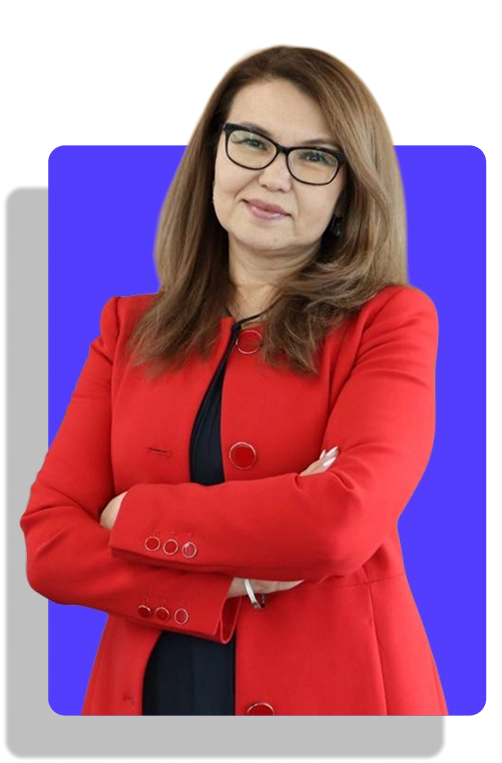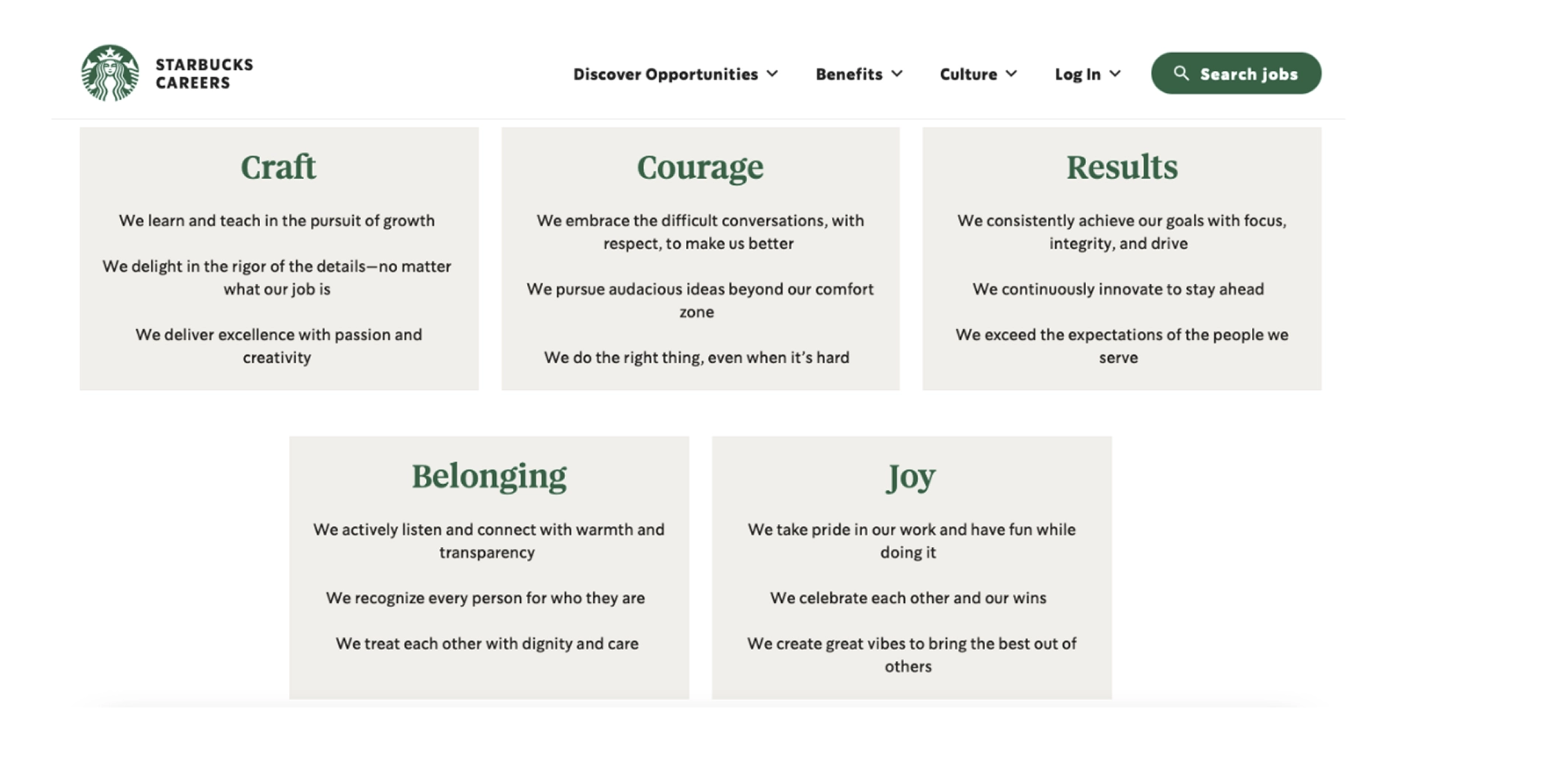


Рекомендации по корпоративному wellbeing для HR-специалистов
Отправим на почту кейс корпорации Mars Казахстан


AI versus the 'third place': why the main trend in HR is not technology, but humanity
Gulshat Sadykova, an HR and HRD expert at Starbucks, drawing on her extensive experience from telecommunications to Starbucks, analyzes the evolution of HR in Kazakhstan. The conversation raises pressing questions: how to 'sell' values to employees, why wellbeing starts with leaders, and whether AI can replace the magic of personal interaction.
.png)

Gulshat's career path began in the 1990s — a time when the culture of business education was just forming in Kazakhstan. In 1992, she enrolled in the country's first MBA program in English. 'Back then, even the word "marketing" sounded unfamiliar to us,' Gulshat recalls with a smile. 'No one really understood what it was.' Her professional life was tied to numbers: she successfully worked as a financial analyst and chief accountant, building a solid economic background. 'I liked my job, everything was going well. But in the early 2000s, when I joined a telecom company, I first encountered the work of an HR specialist in practice. It fascinated me.' This experience became pivotal. When it was time to change jobs and an offer came from another telecommunications company, Gulshat made a bold decision. 'I said: "I will come, but only for an HR position."' Despite lacking direct experience in this field, she actively prepared: seeking information and attending courses. 'Of course, at that time I was inexperienced in HR, but it was what I truly wanted to do.'
Maxim: Gulshat, we know you changed professions and dedicated yourself to HR. What captivated you about this role?
Gulshat: I was inspired by the example of the HR specialist I worked with. Usually, in a company, an employee has direct contact only with their manager, and everything is limited to work tasks. But here was a neutral person who genuinely cared about my wellbeing: whether I was comfortable in my role, whether my career was on the right track, and where I could apply my skills. She became a model of a true professional for me — I still remember her with great respect, and we continue to be friends. She was my starting point. I thought, 'Wow, how cool it is to be someone who supports, guides, and cares for others.'
In Kazakhstan, HR as a function began to take shape only in the early 2000s. 'I was fortunate: I started my HR journey alongside the development of this profession in the country.' Gulshat believes that corporate culture and values are no longer an option, but a standard, the foundation for any company. Importantly, it is not just about formal declaration, but real embodiment. Both management and employees pay close attention to them. For example, candidates increasingly ask in interviews: 'What is your corporate culture?' According to Gulshat, it is difficult to describe culture in one sentence, as everyone has their own understanding. Therefore, she usually asks counter-questions: 'In what atmosphere do you feel most comfortable working? What motivates you? What is important to you?' Answers to these questions help determine how well a candidate's expectations align with the company's reality.
The process of building corporate values can indeed vary. Sometimes it starts from scratch, moving 'from the bottom up': first, employee surveys are conducted, then discussions with management take place, and ultimately everyone arrives at a common set of values that resonates with all. There are also other cases — for example, working in global companies where values are already established at the headquarters level.
Each company adds its own 'highlight' to the basic set of values, corresponding to its specifics. For example, in the Eurasian Development Bank, such a value was passion, reflecting the mission of developing intergovernmental space. At the Kazakhstan Stock Exchange, the value was 'care.' Gulshat's HR team represents the 'Alshaya' group but operates under the Starbucks brand, which has its own global values. Thus, the team operates under two systems: the global values of Starbucks and the internal values of 'Alshaya.' Starbucks values undoubtedly include basic principles like professionalism and teamwork.

When values already exist but require transformation, it is important to conduct various activities for staff and demonstrate that the new values are just as significant and relevant as the previous ones. This process takes time — at least a year.


A unique case in Gulshat's practice — adapting the values of the Chinese company China City Group, which required interpretation. "We needed to translate values from Chinese. There are certain cultural nuances. And, of course, the wording needed to be adapted."
Human-centricity is an established trend, Gulshat believes. — More and more companies are coming to understand that business is not just about profit, but also about the overall benefit for people. If such statements were previously often perceived as formalities — like the well-known Nokia slogan "Connecting people" — today owners and leaders truly realize: business becomes genuinely effective when you think not only about money but also about people. And this is no longer a trend, but a sustainable tendency.
Maxim: On a global level, the trend towards human-centricity is indeed reflected in the numbers — and it has deep historical roots. Since the beginning of the last century, the working week has been limited to protect workers' rights and make labor more humane. Progress is evident. What do you think this could lead to in the future? What are the possible boundaries of this movement?
Gulshat: If we look at the broadest perspective, I recall school lessons where we were taught about technological revolutions — the invention of the wheel, electricity. Thanks to them, heavy physical labor began to be replaced by intellectual work, and "blue-collar" workers gradually gave way to "white-collar" workers. The very technology of labor was changing.
Today we live in a completely different reality. I remember, as a child, we often drew futuristic pictures where machines completely replace humans, and all people engage in creativity and rest. Back then, it seemed like a utopia. But now my children, for example, think exactly like that: they want not just to "earn money", but to realize themselves in creativity. And this, it seems to me, is a common trend of the new generation. I believe that ultimately we can come to such a balance — a world where value will not only be economic efficiency but also self-realization, creativity, and the wellbeing of each individual.
The transition to intellectual and creative labor, despite its advantages, has given rise to new serious challenges — an increase in burnout, depression, and feelings of loneliness among employees. This qualitatively new level of problems may even be more complex than previous ones.
From the employer's perspective, Gulshat notes a significant increase in attention to mental health issues over the past 10-20 years. Two decades ago, this topic was hardly raised in the local market, while in the West it was already actively discussed. Today, in her opinion, the region faces similar challenges — possibly as a result of economic development that has led to the same problems, or as a natural stage in societal development.
This problem became particularly acute during the pandemic. Gulshat emphasizes that lockdowns and the virus itself had a significant impact on people's mental state. As an employer, she notes an increase in cases where companies face these issues among employees and acknowledges the need for a systematic approach to solving them.

According to Gulshat, corporate services have been discredited by a large influx of unqualified individuals, and as a result, the expert has established a clear taboo: the company should not provide or pay for psychological services directly to employees.
The main reason is the inability for the employer to objectively assess either the specialist's qualifications or the effectiveness of their help. The consequences of unqualified intervention can be unpredictable. "If an employee requires professional psychological help, the choice of specialist and medical institution should remain their personal responsibility."
.webp)
What can a company do for the health of its employees? The foundation is training for leaders, the expert believes. The comfort and wellbeing of employees are formed within their micro-collective, and the atmosphere in it is set by the immediate leader. If they care about the psychological climate, the team will feel comfortable. HR can provide tools and knowledge, but culture is created by the leader."
That’s why I, for example, started teaching in the MBA program: leaders often discover simple yet important things — how to motivate, how to look at a problem correctly. It’s all about soft skills."
A cafeteria of benefits is not a novelty, but its effectiveness depends on the company's willingness to invest resources and reconsider the set of options. The new generation (for example, employees under 25) may not value classic benefits like health insurance. The key is flexibility and proper positioning: not "we provide a package", but "we care about you". Therefore, the cafeteria of benefits remains relevant but requires constant adaptation.
Therefore, we focus on activities based on genuine interest and team spirit:
Participation in marathons is also an opportunity for branding: we support runners with free coffee from Starbucks. This way, we do not impose a healthy lifestyle but create an environment where it can be embraced organically.
Maxim: I agree with you. By the way, in Oxford, my friend is developing a startup with an AI assistant for managers. This system psychologically profiles team members, helping to build relationships. For example, before a meeting with a colleague, one can ask the AI: "How should I conduct the conversation with Gulshat?" — and it analyzes profiles and previous conversations to provide recommendations. The service is available 24/7 and truly delves into the team's characteristics. I was impressed by how it can coach a manager in communicating with different people.
Gulshat: Here I am ready to argue. I am convinced that one should form an image of the person one is going to communicate with independently. If AI or even a live assistant starts whispering in advance: "Gulshat is this way, behaves that way," it will create a filter. But if you look at a person without prejudice, you might notice other, much more important traits for interaction.
Despite a pragmatic attitude towards AI, Gulshat sees risks where technologies claim to replace human interaction. "As an expert, I am for automating routine tasks: let algorithms process data, saving our time. But as an HR professional — I am against prioritizing efficiency over human connection."
However, in her opinion, the ultimate goal of technology is not blind efficiency but preserving human connection. This principle is most vividly illustrated by the Starbucks case: a company that reached the heights of operational efficiency realized it risks losing its soul — the philosophy of the "third place" by Ray Oldenburg.

The essence of Starbucks is not in coffee, but in creating a space for human communication," Gulshat explains. This philosophy is based on the theory of the "third place" by sociologist Ray Oldenburg. According to it, an urban dweller should have three key locations: home (the first place), work (the second place), and a neutral territory — the "third place". This can be a café where people meet friends, work, or simply relax alone. This is the role that Starbucks strives to fulfill as a social hub, satisfying the fundamental human need for communication.
The pursuit of efficiency, common to all retail, led Starbucks to a crisis of identity. The company, like others, bet on online orders and takeout service, even to the point of removing tables and chairs. However, having optimized processes, Starbucks faced a key question: how does it differ from any other coffee brand if it sells the same product?
The realization of this loss of "uniqueness" — that very magic of the "third place" — led to the birth of the "Back to Starbucks" strategy. Its goal is to restore the unique value proposition: not just coffee, but a space for personal communication, symbolized by the name written on the cup.
Despite a pragmatic attitude towards AI, Gulshat sees risks where technology claims to replace human interaction. "As an expert, I support the automation of routine tasks: let algorithms process data, saving our time. But as an HR professional, I oppose when efficiency is prioritized over human connection." However, in her opinion, the ultimate goal of technology is not blind efficiency, but the preservation of human connection. This principle is vividly illustrated by the case of Starbucks: a company that reached the heights of operational efficiency realized it risked losing its soul — the philosophy of the "third place" by Ray Oldenburg.
Maxim: To generalize the trends, for the youth (Gen Z), a healthy lifestyle and self-realization through creativity come to the forefront. How do you think HR will evolve in response to these demands? And what steps should be taken right now?
Gulshat: Humanity is evolving, and people must change. This is absolutely normal, so I see no problems with Gen Z. At Starbucks, the main workforce consists of students. It’s hard 8-hour work on their feet, involving not only coffee preparation but also cleaning, delivery work, and much more. In every generation, there are those who are willing to work and those who are not. Gen Z are wonderful kids, I adore them.
Gulshat Sadykova's recommendation for HR specialists is Howard Schultz and Ying Dori Jones' book "How Starbucks Built a Company Cup by Cup."
The philosophy of Starbucks is rooted in the history of its creator, Howard Schultz. Studying the success of Italian coffee shops, he noticed their unique atmosphere: often these were family-run establishments where the first floor was dedicated to serving guests, while the owners lived on the second. Thus, visitors were literally welcomed "home."

This idea formed the basis of Starbucks' concept as a "third place" — a space between home and work, where a sense of comfort and community prevails. To emphasize this, the company refers to its baristas as partners. This is not related to shares in the business; it is a symbolic status. A partner is not just an employee, but the owner of their "home," who creates a warm atmosphere for guests.